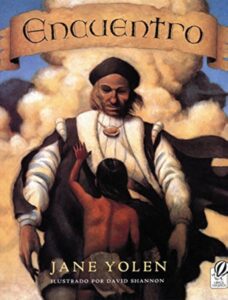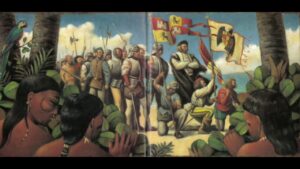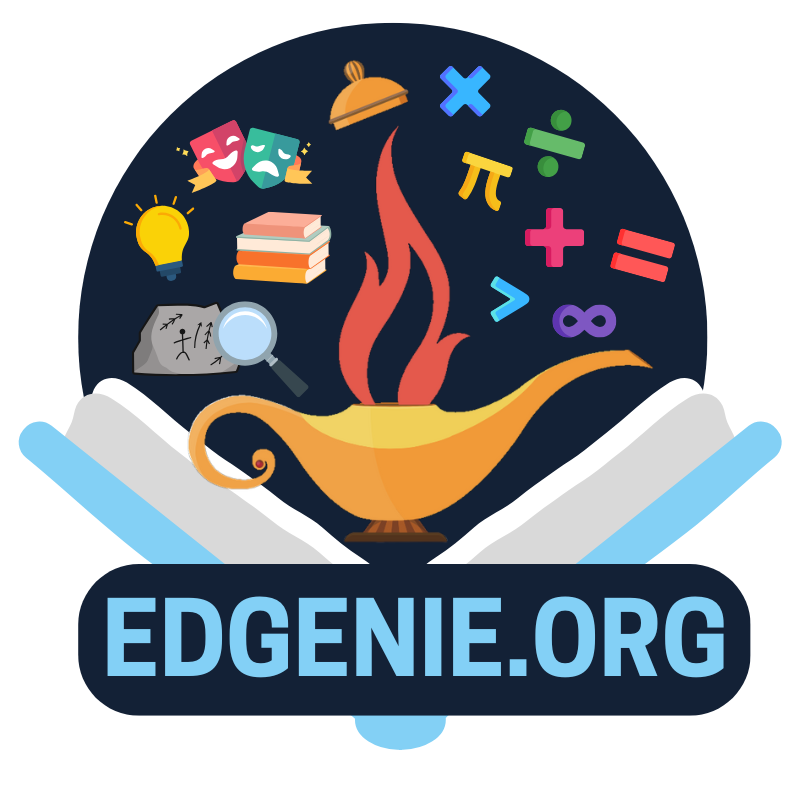“Encounter” by Jane Yolen: A Step Towards Inclusivity, but There’s Room to Grow
In today’s classrooms, the stories we choose to tell matter more than ever. When teaching about historical events—especially ones as monumental as the arrival of Europeans in the Americas—the narratives we highlight can shape students’ understanding of the past and its complexities. For many years, the traditi

onal Eurocentric perspective dominated history lessons, portraying events like Columbus’s arrival through the lens of European “discovery” and colonization. Thankfully, this has started to change, with more educators seeking out literature that represents Indigenous voices and perspectives. One such book that takes a meaningful step in this direction is Encounter by Jane Yolen.
A Shift in Perspective: The Power of Encounter
The beautifully illustrated and poignant story of Encounter tells of Columbus’s arrival through the eyes of a young Taíno boy. This shift in perspective is crucial because it challenges the dominant narrative of exploration and discovery, instead highlighting the fear, confusion, and eventual devastation experienced by the Indigenous people who first met the Europeans. The boy in the story senses that the strangers will bring harm, and his voice offers a counter-narrative to the idea that Columbus’s landing was purely a moment of celebration or advancement.

By choosing to tell the story from a Native viewpoint, Yolen provides young readers with an opportunity to consider how Indigenous people may have experienced and interpreted these events. This is a significant and necessary departure from the often glorified, one-sided portrayal of Columbus’s “discovery” that has been perpetuated in many history books for generations.
Try this activity Encounter by Jane Yolen_Point of View on Teachers pay teachers. In this assignment, students will delve into the concept of point of view by closely examining the short story “Encounter” by Jane Yolen. Through a careful analysis of the narrative perspective, students will gain a deeper understanding of how point of view shapes the meaning and interpretation of a story.
>Use this TPT code EDGENIE15 to get 15% off Encounter Lesson (ends October 29, 2024)
The Importance of Indigenous Perspectives
While Encounter is an important tool in the classroom for introducing students to the Native perspective, it’s also important to recognize that the book is not written by an Indigenous author. Jane Yolen is a white woman, and while her intention to give voice to Indigenous people is commendable, it is not a substitute for authentic Native voices. When stories about Indigenous experiences are told by non-Indigenous authors, there is always the risk of misinterpretation, simplification, or perpetuation of stereotypes, even when the author’s intentions are good.
In the case of Encounter, Yolen uses her narrative skills to shed light on a story that desperately needs to be told from the perspective of those who lived it. But the conversation shouldn’t end here. We must continue to elevate works by Native authors, who can speak directly from their cultural experiences and knowledge. Books like Encounter can serve as a stepping stone, but we must ensure that students also hear from Indigenous voices, whose authenticity adds richness and depth to these complex historical narratives.
Raising Up Minority Voices
As educators, we have a responsibility to seek out and amplify minority voices. There is a growing body of work by Indigenous authors who are telling their own stories and those of their ancestors with the authenticity and nuance that only they can bring. Authors like Louise Erdrich (The Birchbark House), Tim Tingle (How I Became a Ghost), and Cynthia Leitich Smith (Indian Shoes) offer readers a genuine window into Native life, culture, and history, both past and present.
It’s also vital to foster discussions about who gets to tell certain stories and why it matters. While Encounter offers a valuable alternative to the Eurocentric retellings of Columbus’s arrival, it’s crucial to pair it with works by Native authors that can provide deeper context and representation. We should use Encounter as an entry point for discussions on how history has been told and why it’s essential to actively seek out and include the voices of those who have been historically marginalized.
Conclusion: Moving Forward
Encounter is an important text because it offers young readers a chance to see a historical event from a perspective that has too often been ignored. It helps challenge the Eurocentric narrative that has dominated the history of Columbus’s arrival for far too long. But as we use books like Encounter in our classrooms, we must also be aware of the limitations inherent in non-Native authors telling Indigenous stories.
We must push beyond this first step by actively seeking out and integrating more works by Indigenous authors into our teaching. By doing so, we not only provide a more accurate portrayal of history but also help empower Native voices, giving students a more balanced, diverse, and inclusive understanding of the world.
In the end, while Encounter represents progress, there is still much room to grow. As a reading teacher in addition to a Social Studies teacher, there is a phrase we use all the time, that “when you know better, you do better”.
Are there other ways you use picture books to teach about this topic? Are there other resources you use that are written by indigenous authors? Please comment and share




